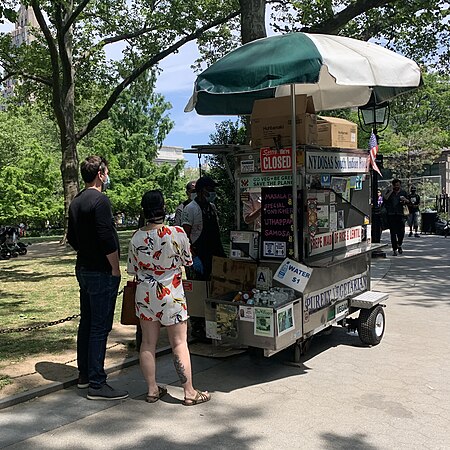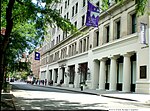The Grey Art Gallery is New York University’s fine art museum, located on historic Washington Square Park, in New York City's Greenwich Village. As a university art museum, the Grey Art Gallery functions to collect, preserve, study, document, interpret, and exhibit the evidence of human culture. While these goals are common to all museums, the Grey distinguishes itself by emphasizing art's historical, cultural, and social contexts, with experimentation and interpretation as integral parts of programmatic planning. Thus, in addition to being a place to view the objects of material culture, the Gallery serves as a museum-laboratory in which a broader view of an object's environment enriches our understanding of its contribution to civilization.
In 1974, Abby Weed Grey established the Grey Art Gallery (originally known as the Grey Art Gallery and Study Center) at New York University, both as a permanent home for her art collection and to promote international artistic exchange in an academic setting. The museum opened to the public in 1975. The Abby Weed Grey Collection of Modern Asian and Middle Eastern Art at NYU comprises some 700 works produced by artists from countries as diverse as Japan, Thailand, India, Kashmir, Nepal, Pakistan, Iran, Turkey, and Israel. Mrs. Grey's vision was bold and simple: one world through art. Believe that art, as a universal language, could serve as a potent vehicle for knowledge, communication, and understanding, Mrs. Grey formed this unique collection while traveling in Asia and the Middle East in the 1960s and '70s. The Abby Weed Grey Collection constitutes the largest institutional holdings of modern Iranian and Turkish art outside those countries.The Grey Art Gallery also oversees the art collection of New York University. Founded in 1958 with the acquisition of Francis Picabia's Resonateur (1922) and Fritz Glarner's Relational Painting (1949–50), the NYU Art Collection comprises approximately 5,000 works, mainly dating from the 19th and 20th centuries, such as Pablo Picasso's Bust of Sylvette (1967), currently installed at University Village (Manhattan); Joseph Cornell's Chocolat Menier (1952); and works by Henri Matisse, Joan Miró, and Ilya Bolotowsky, as well as Romare Bearden, Arshile Gorky, Adolph Gottlieb, Kenneth Noland, Jane Freilicher, Ad Reinhardt, and Alex Katz, among many others.







